If you are looking to enjoy a flavorful and easy-to-make udon noodle soup, Tanuki Udon is a great choice. This popular dish from the Kanto region of eastern Japan features udon noodle soup with the addition of tenkasu tempura bits, giving it a delightful flavor.
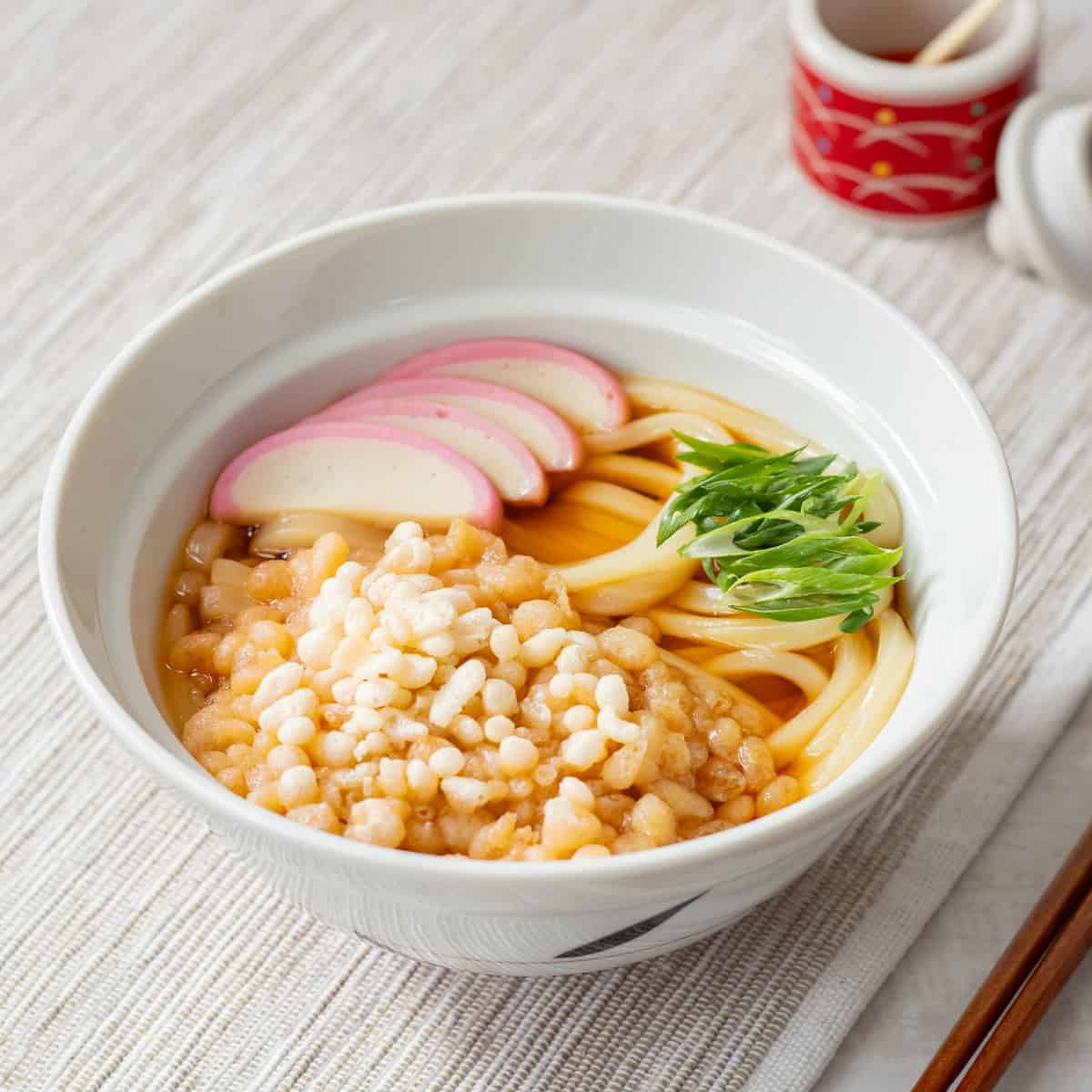
Jump to:
What is Tanuki Udon?
Tanuki Udon is a type of Japanese udon noodle soup featuring a soy sauce-based broth, topped with tempura bits called tenkasu.
The term "Tanuki" means Japanese raccoon dog, but in this dish, it refers to tenkasu (tempura bits). There are various theories as to why tenkasu is called tanuki in this dish, but generally, it comes from an abbreviation of the word 'tane-nuki,' meaning without (nuki) main toppings (tane) other than tenkasu. Another theory suggests that the darker color of the soup resembles the color of a Japanese raccoon dog, compared to Kitsune Udon, which originated in the Kansai region (western Japan) and features a lighter color like that of a fox,
This dish originated in the Kanto region (eastern Japan) and is known for its rich, soy sauce-based flavor. It is a recommended choice when you want to enjoy a strong-flavored Japanese udon noodle soup with minimal fuss.
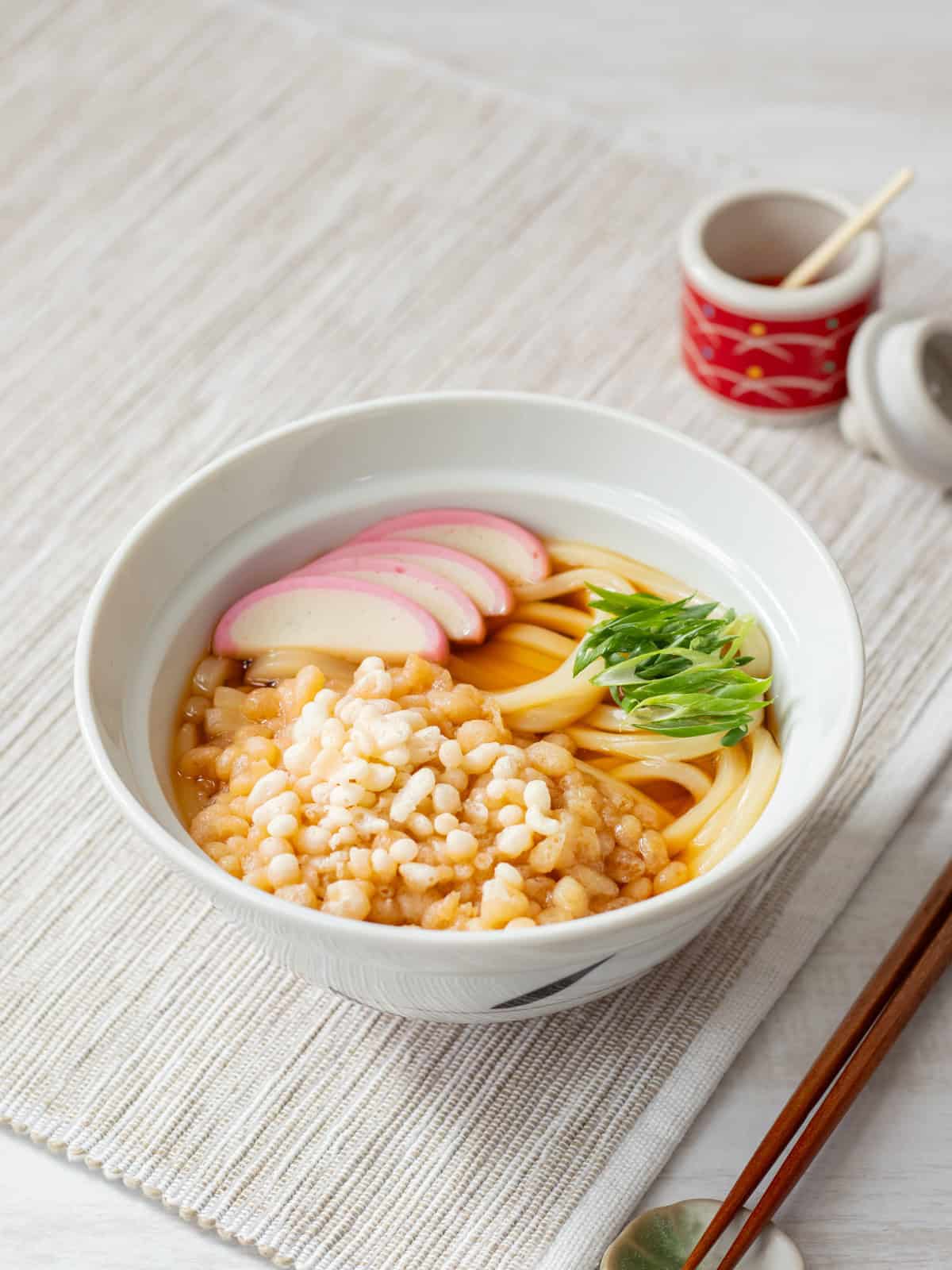
Recognition across regions
Tanuki udon is well-known in the Kanto region (eastern Japan), but its name is hardly recognized in the Kansai region (western Japan). In Kansai, udon noodle soup topped with tenkasu is known as Agedama Udon or Haikara Udon (though the flavors differ).
Interestingly, even within the Kansai region, particularly in Kyoto, mentioning "tanuki udon" refers to an entirely different udon noodle soup. It is a udon noodle soup thickened with starch, topped with aburaage (fried tofu pouches) sliced into strips about ⅘-inch (2 cm) wide, and kujō-negi (a type of Japanese leek that is a specialty of Kyoto).
Therefore, if you were to talk about this dish with a Japanese acquaintance from the Kansai region, they might not know what you are referring to. Additionally, if they are from Kyoto, they might imagine a different dish.
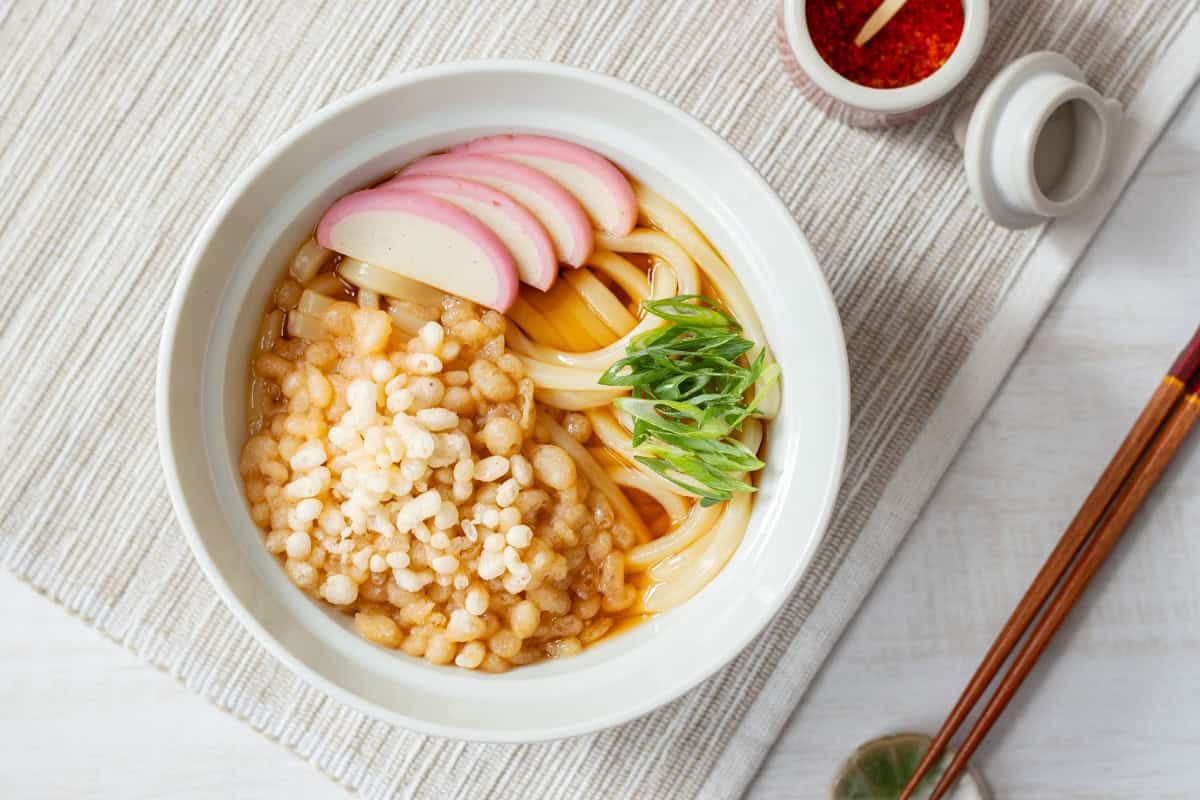
Udon soup seasoning
When preparing this dish, it is advisable to focus on the flavor of the udon soup.
The seasoning of udon soup varies primarily between the Kanto region in eastern Japan and the Kansai region in western Japan. In the Kanto region, a large amount of soy sauce is used, giving the soup a rich color and a strong, salty flavor. In contrast, the Kansai region uses a more flavorful dashi broth and less soy sauce, resulting in a lighter color and milder saltiness.
Tanuki udon can be made with any seasoning, but since it is a popular dish in the Kanto region, I highly recommend seasoning it in the Kanto style. Unlike udon noodle soup in Kansai, which commonly uses kombu (dried kelp) for dashi, the Kanto style is characterized by using more soy sauce.
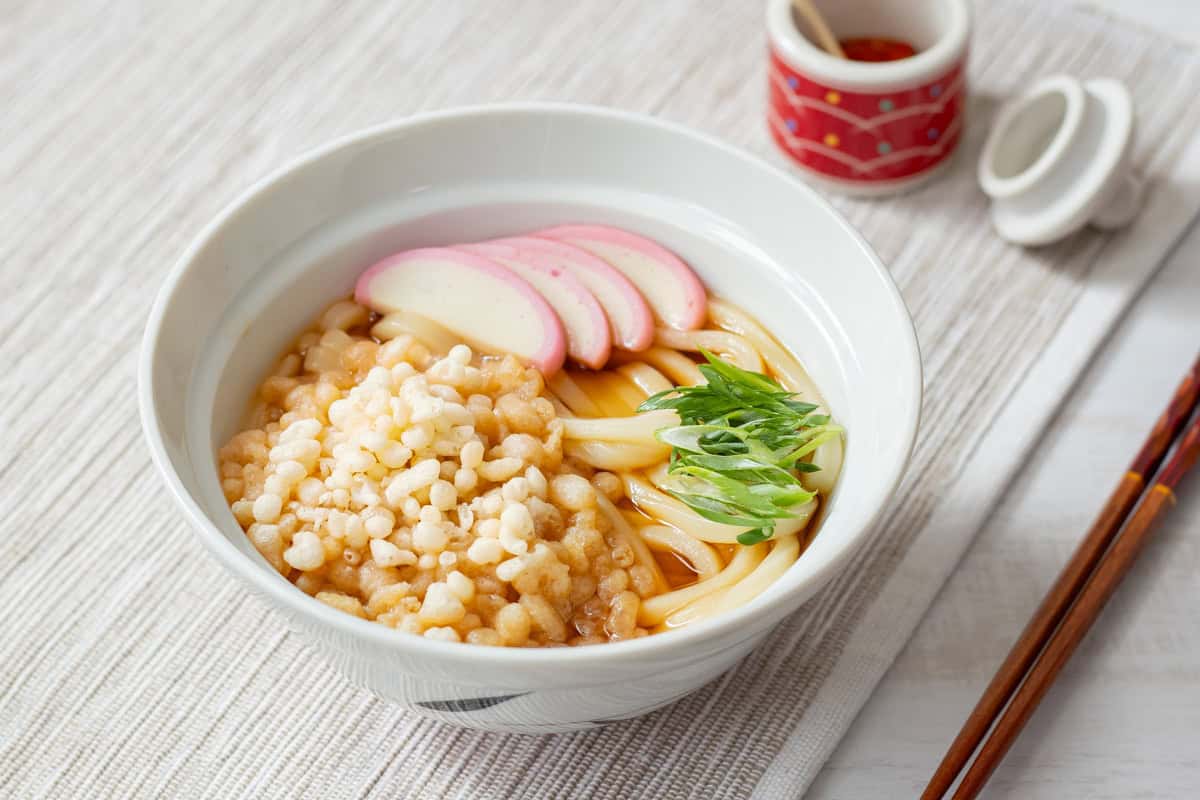
📋Step-by-step recipe
Ingredients
- 1 serving udon noodles (fresh, dried, pre-cooked, or frozen)
- 0.35 oz kamaboko (fish cake)
- 1 green onion / scallion
- 1 Tbsp mirin
- 2 Tbsp soy sauce
- 3 Tbsp tenkasu (tempura bits)
Bonito dashi (udon broth):
- 1 ½ cups water
- ⅗ cup bonito flakes (katsuobushi)
Instructions
🕒 Total: 15 mins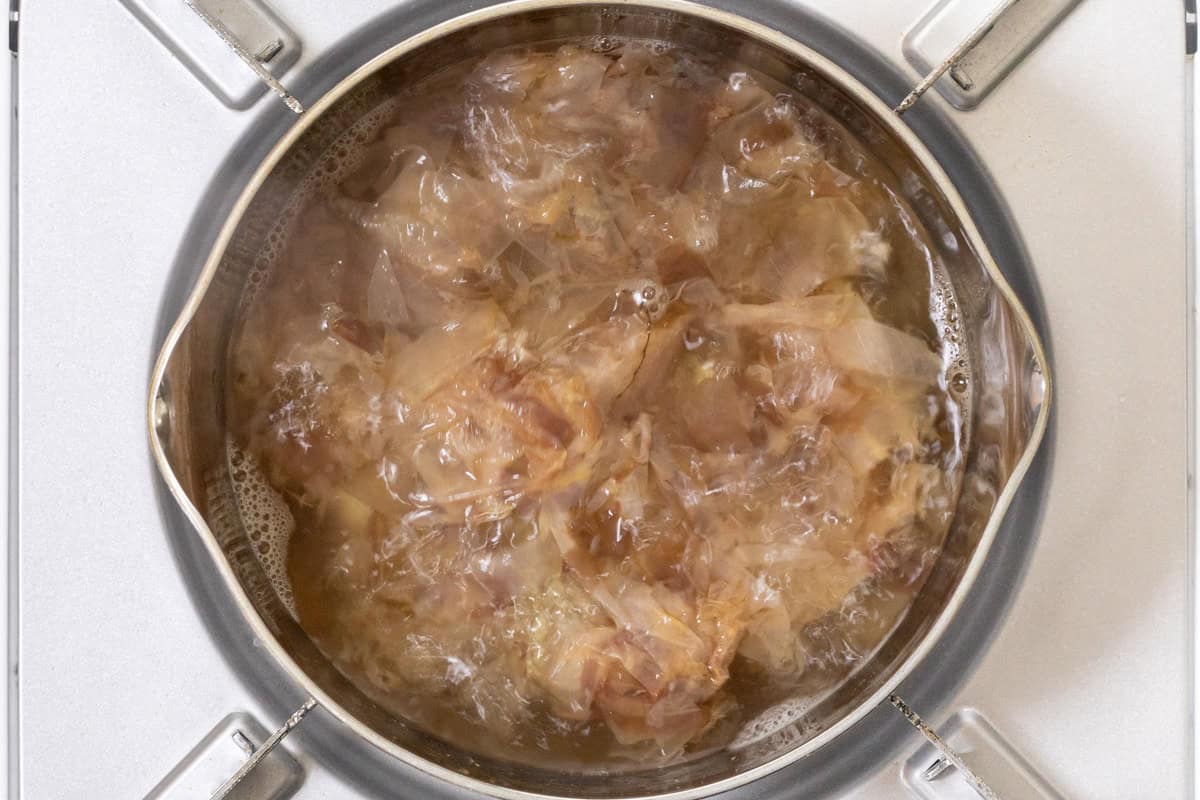
Step 1
Fill a pot with water and bring it to a boil. Once boiling, reduce the heat to low, add bonito flakes, and let it simmer for 6 minutes.
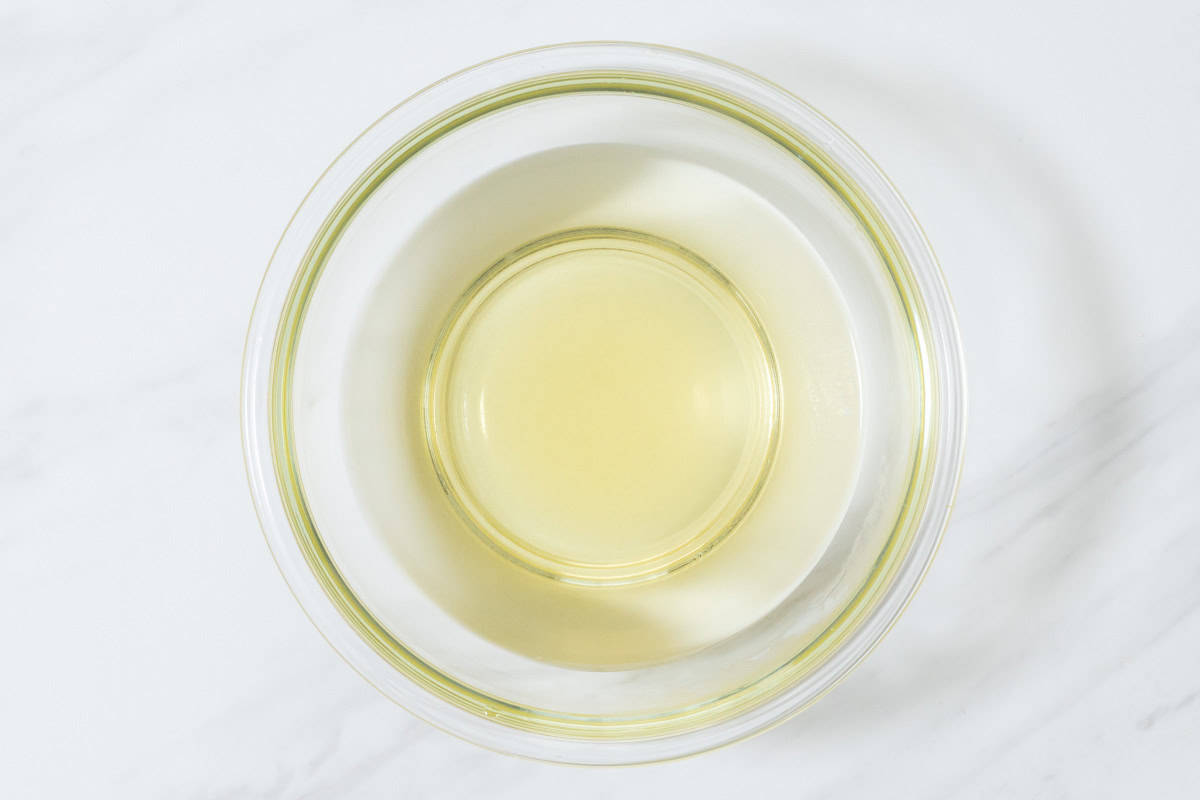
Step 2
Turn off the heat and strain the mixture through a sieve lined with paper towels or a cloth (such as cheesecloth). Alternatively, if you don't mind some fine bonito flakes remaining, you can simply use a fine-mesh strainer. Bonito dashi (udon broth) is now ready.
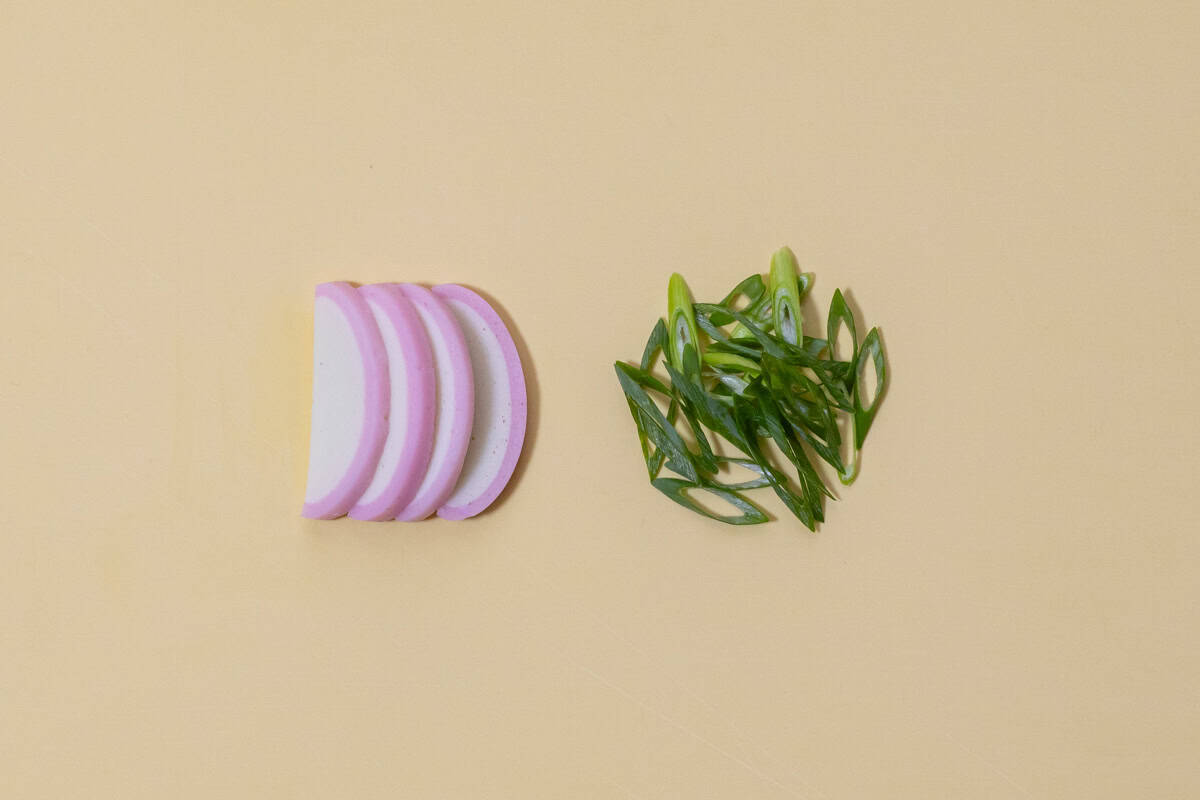
Step 3
Thinly slice kamaboko into bite-sized pieces. Thinly slice green onion diagonally or into rings.
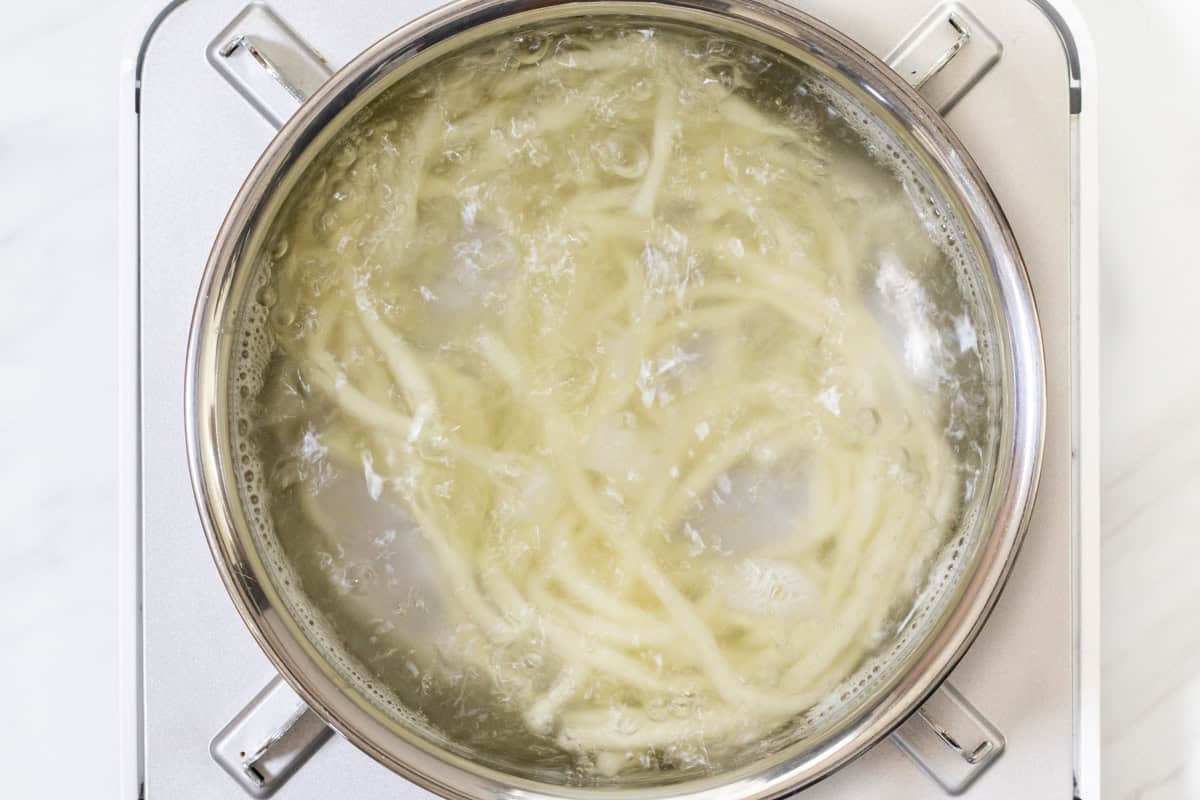
Step 4
If using fresh, dried, or pre-cooked udon noodles: Boil the udon noodles according to the package instructions. Once cooked, drain them in a colander.
If using frozen udon noodles: Lightly sprinkle water over the udon noodles. Then, place them on a microwave-safe plate, cover with plastic wrap, and microwave on medium power (500W) for about 4 minutes. (Since this method can cause uneven heating, it is best to microwave one serving at a time. You can also boil them like the other types of udon noodles.)
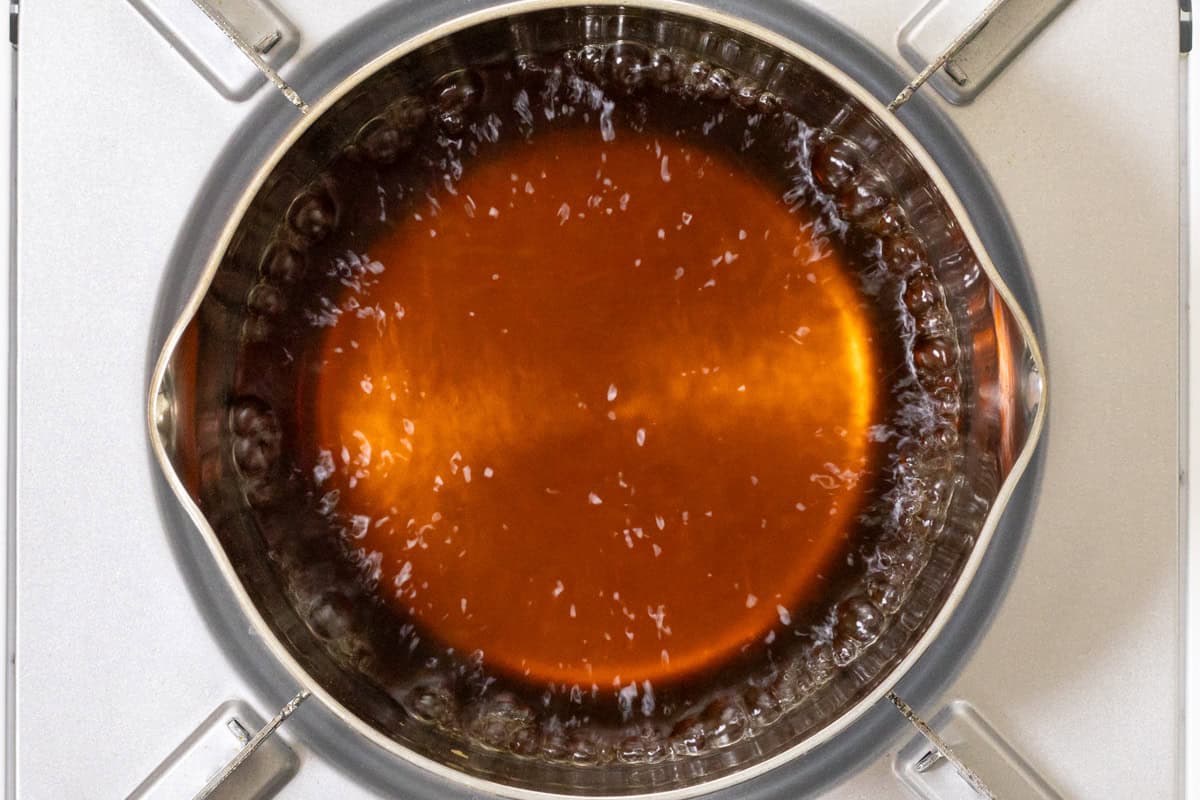
Step 5
Return the dashi to the pot, add mirin and soy sauce, and bring it to a boil.
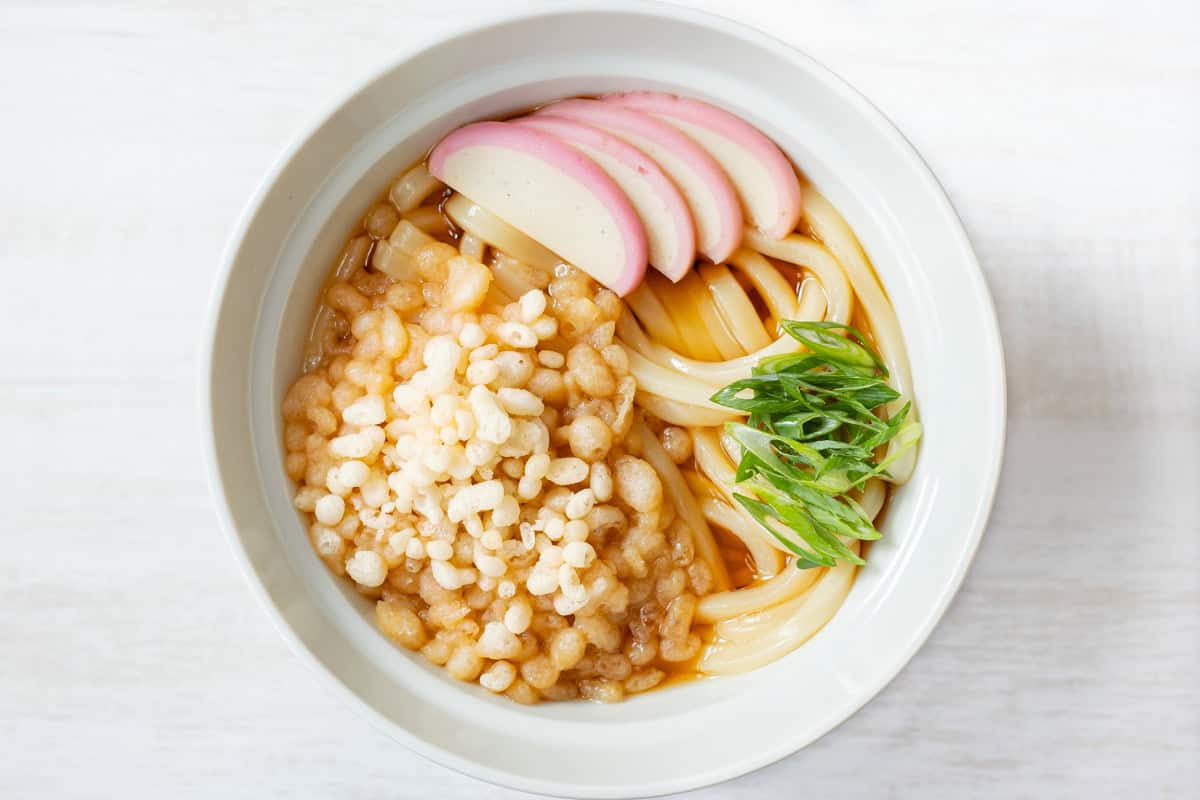
Step 6
Place the udon noodles in a bowl and pour the liquid mixture (udon soup) over them. Loosen the udon noodles with chopsticks and then top with tenkasu, kamaboko, and green onions.
To store
This dish is not suitable for storage because cooked udon noodles tend to lose their texture over time, making them less enjoyable. However, the udon soup alone can be stored for up to 3 days.
If you try this recipe, I’d love to hear what you think. Please consider leaving a review and star rating in the comments below. If you enjoyed it, I’d really appreciate it if you shared it with your friends.
Recipe card

Tanuki Udon
Ingredients
- 1 serving udon noodles (fresh, dried, pre-cooked, or frozen)
- 0.35 oz kamaboko (fish cake)
- 1 green onion / scallion
- 1 Tbsp mirin
- 2 Tbsp soy sauce
- 3 Tbsp tenkasu (tempura bits)
Bonito dashi (udon broth):
- 1 ½ cups water
- ⅗ cup bonito flakes (katsuobushi)
Instructions
- Fill a pot with water and bring it to a boil. Once boiling, reduce the heat to low, add bonito flakes, and let it simmer for 6 minutes.
- Turn off the heat and strain the mixture through a sieve lined with paper towels or a cloth (such as cheesecloth). Alternatively, if you don't mind some fine bonito flakes remaining, you can simply use a fine-mesh strainer. Bonito dashi (udon broth) is now ready.
- Thinly slice kamaboko into bite-sized pieces. Thinly slice green onion diagonally or into rings.
- If using fresh, dried, or pre-cooked udon noodles: Boil the udon noodles according to the package instructions. Once cooked, drain them in a colander.If using frozen udon noodles: Lightly sprinkle water over the udon noodles. Then, place them on a microwave-safe plate, cover with plastic wrap, and microwave on medium power (500W) for about 4 minutes. (Since this method can cause uneven heating, it is best to microwave one serving at a time. You can also boil them like the other types of udon noodles.)
- Return the dashi to the pot, add mirin and soy sauce, and bring it to a boil.
- Place the udon noodles in a bowl and pour the liquid mixture (udon soup) over them. Loosen the udon noodles with chopsticks and then top with tenkasu, kamaboko, and green onions.
Notes
- This dish is not suitable for storage because cooked udon noodles tend to lose their texture over time, making them less enjoyable. However, the udon soup alone can be stored for up to 3 days.


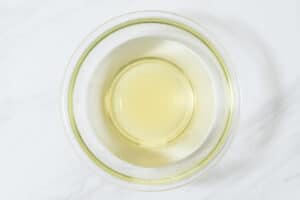
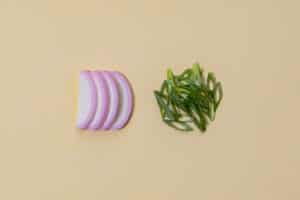
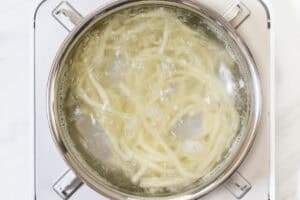
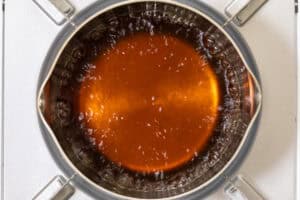
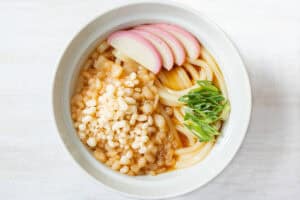
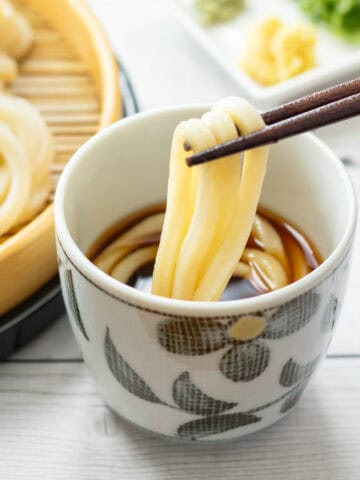
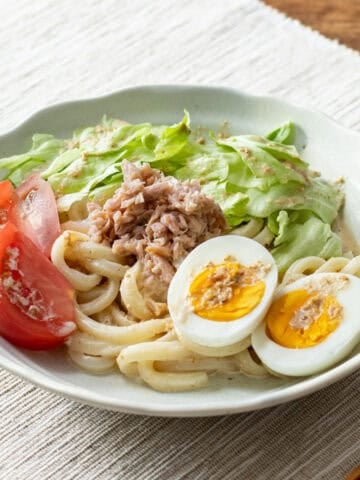
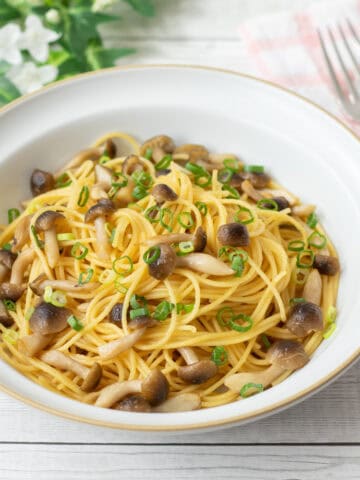
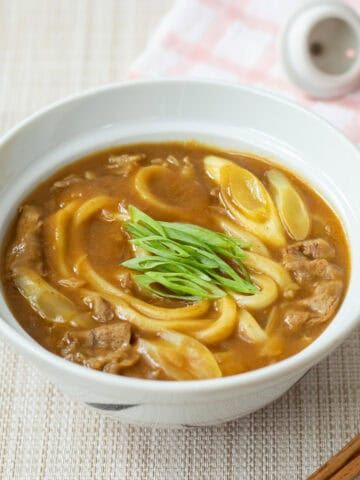
Leave a Rating and a Comment